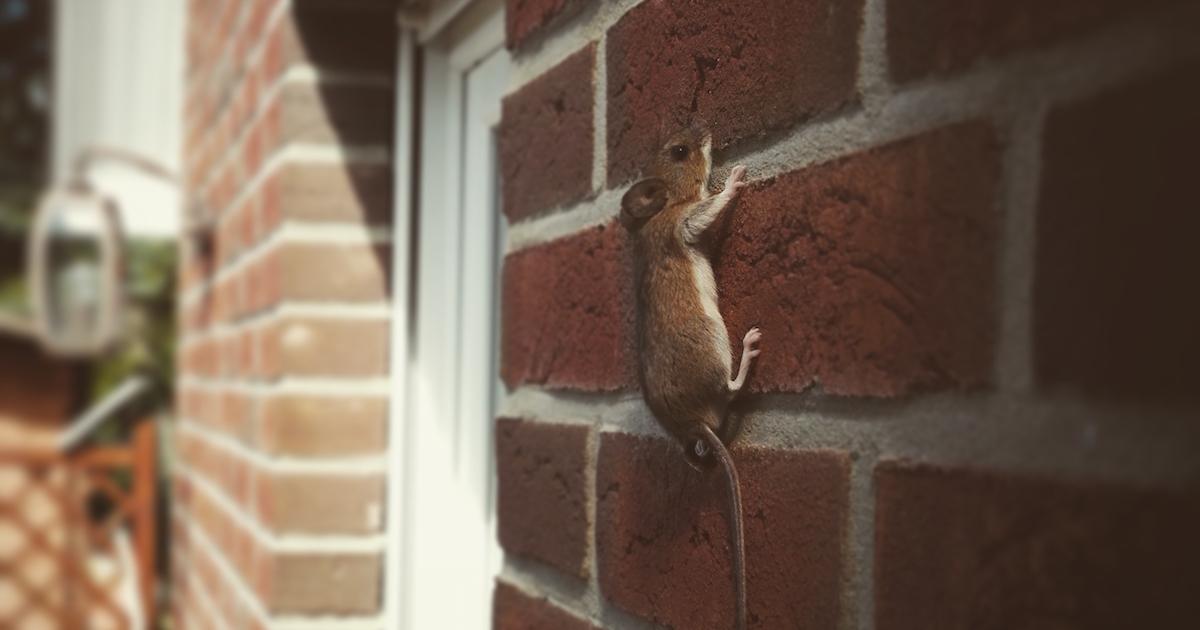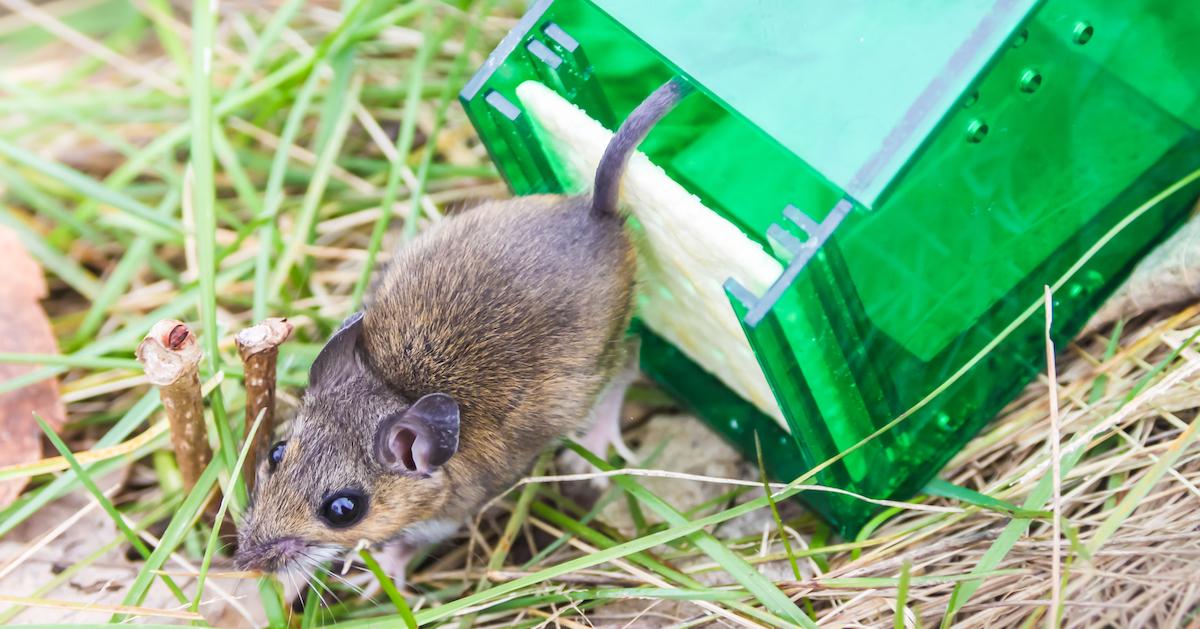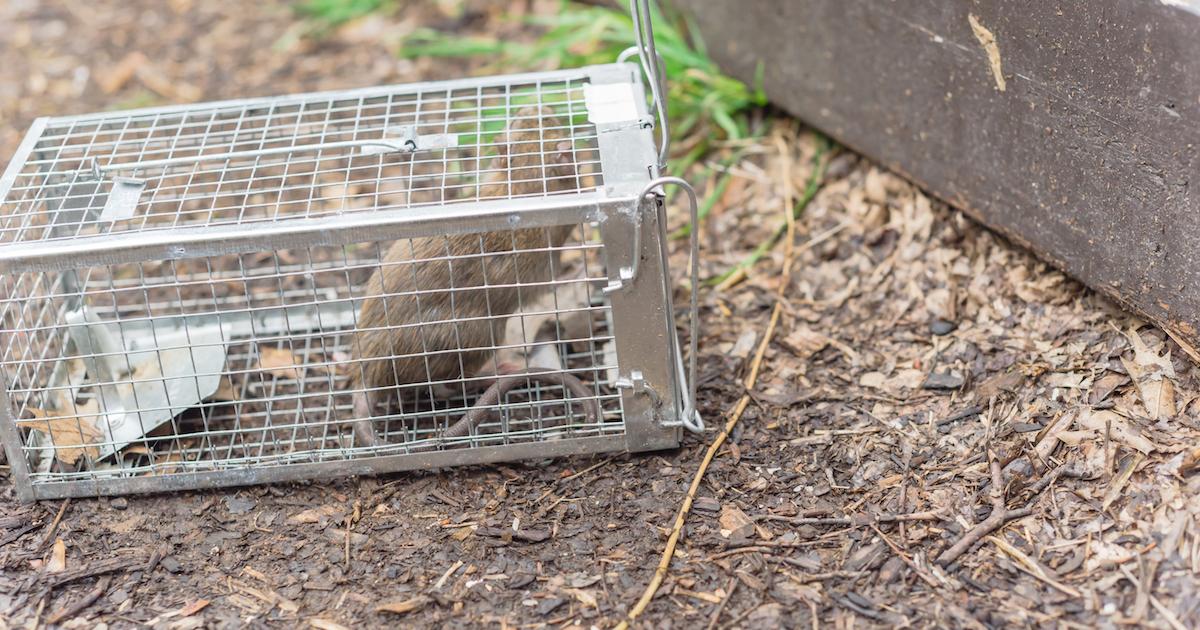Humane Ways to Catch a Mouse
Published Dec. 10 2020, 12:10 p.m. ET

Part of the problem with Tom and Jerry was that the cat always seemed to want to harm the mouse. Tom's schemes always appeared a bit more violent than they needed to be, especially as they always invariably were turned against him in the end. Now, chances are good that the mice in your house are no Jerry, but that doesn’t mean that catching them is going to be easy. In fact, knowing how to catch a mouse humanely can actually be a little tricky — even if it’s the better option.

Why do mice come inside our homes?
Mice come inside our homes for food and warmth. In the summer months, they’re usually out in the fields and forests or making their nests in outbuildings and barns. When the weather gets colder, they make their way inside our comfortable homes. It makes sense, especially if you’re a mouse. Our houses are full of food and lots of small, warm, tight spaces for them to hide out and avoid any household pets that might otherwise harass them.
What are the least humane mouse traps?
The least humane mouse traps of all are sticky glue traps. These torturous squares of simple glue and cardboard are one of the most effective ways to catch a mouse, but if you’ve ever encountered a still-living mouse on one of these things, you know there has to be a better way. The worst part about these traps is that they are advertised as being “more humane” than the classic snap traps you always see in cartoons.
Once trapped in the glue, mice are literally stuck experiencing a slow, fearful, inevitable death, and there’s no way to safely remove them from the glue. Poisons are no better and laying them out as bait or spraying them into your walls is a good way to poison your pets, your family, or yourself in the bargain. If these poisons are sprayed outdoors, they pose risks to other wild creatures as well.

How to catch a mouse humanely?
The most effective rodent controls focus on repellents, deterrents, and exclusion — at least according to PETA. Deterrents are some of the best ways to keep mice from coming inside. You can’t do much about the warmth they seek, but you can minimize the amount of food they have access to within your home. Keep counters, sinks, and cabinets free of all crumbs and debris and store dry food and pet food in sealed containers. We’re not just talking cardboard boxes either. Such paltry pantry methods have never stopped a determined rodent.
Can mice be trapped alive?
Mice can absolutely be trapped alive and released into the wild. Before you think about investing in such traps, however, it’s important to find out where the mice are getting in. Use a flashlight and examine any holes or cracks where you think the little squeakers might be entering and look for any feces or signs of chewed food. It’s important to note that mice can squeeze through holes the size of a dime, so don’t discount any openings you think might be “too small.”
Live cage or box traps are considered the most humane ways to catch mice, so long as you check them regularly throughout the day. Mice have tiny little nervous systems and as prey animals, they are particularly susceptible to just about everything from exposure, to dehydration, to simple stress. Every one of these things can kill a mouse as surely as a glue trap if it’s left alone in the live trap too long.

Where can I find humane mouse traps?
These types of live mouse traps can be found at your local hardware store or ordered online. They come in different sizes depending on the pest in question, but the smaller ones would obviously be best for mice. The Harris brand Catch and Release trap is highly-rated and available at the Home Depot for about 11 bucks.
Similar traps are also available from online retailers like Amazon for the same price. It might be a good idea to look at online retailers for these types of traps anyway, as many of them offer customer ratings attached to their products. Victor has humane traps as well and they tend to be a bit higher-end than the transparent-looking ones sold by other retailers. They come in larger and more complex varieties, though they offer small $10 traps too.
What do I do once I’ve caught the mouse?
Mice are excitable when they’re caught, which is understandable, but they can be calmed by placing a towel over the trap. If you don’t want to kill them, you’re going to want to release them at least 100 yards or more from the place where you trapped them.
The mice should be able to find some sort of food or shelter in that new home, but chances are just as good that they will just fall back into their role in the food chain and become prey for some larger predator. If you don’t want to put them through that, trapped rodents can be taken to a local vet and euthanized.

Are there any repellents I can use?
Rodents can be repelled from your property with a number of different inventions and household items. Once you have found a mouse’s hiding spot, you can plug it up with ammonia-soaked rags, tin foil, steel wool, insulation, or by placing a small strobe light near the entranceway. All of these things are abhorrent to mice and they will probably avoid them from there on out.
Sonic emitters placed around your property have been shown to work at repelling rodents. However, those with cats, dogs, or other pets might not want to use this method as it will likely upset those critters as well. There are also some smells that drive mice a little batty too. Peppermint and clove are strong scents that mice tend to avoid, so you can always pour some essential oils near the mouse holes to keep them from returning.